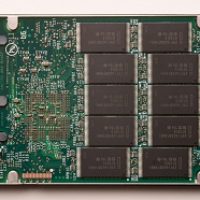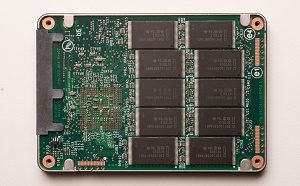 The world of technology has virtually unlimited advancements and miniature evolutions every single day. Hence a new kind of optical drive or USB-interface peripheral popping up overnight is not that big a deal. What is a big deal is knowing what’s new, what makes it relevant and how far along has the parent technology come along, for a better understanding of future prospects.
The world of technology has virtually unlimited advancements and miniature evolutions every single day. Hence a new kind of optical drive or USB-interface peripheral popping up overnight is not that big a deal. What is a big deal is knowing what’s new, what makes it relevant and how far along has the parent technology come along, for a better understanding of future prospects.
The world of secondary memory is no different from this and with the world’s fast paced shift to more compact sized devices, SATA had to go. Even with its interface and form factor, the whole idea of mechanical/moving parts was kind of slowing things down. With that, Solid State Drives (SSDs) were conceived stemming from a motionless operating design.
The drives have flash chips that store electrical charges much the same way as RAM. This makes SSDs superior to Hard Disk Drives (HDDs) in every aspect except obviously the price tag.
Moving on, the advent and evolution of SSD’s have seen a major shift. The initial idea of something called an SSD had shifted and now SSD is a category of technologies itself. In it, are the three most popular variations, available commercially as detailed below. Read on for the latest in NAND chip technology.
Overview
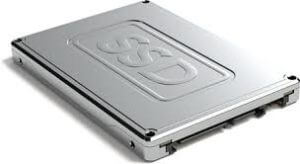 SSDs in their purest nature are electronic chips as opposed to moving magnetic disks such as those in HDDs. The chips allow the electric signals to move around without any moving parts. This means data is not being slowed down by a friction of moving parts and is being transferred at the speed of electricity.
SSDs in their purest nature are electronic chips as opposed to moving magnetic disks such as those in HDDs. The chips allow the electric signals to move around without any moving parts. This means data is not being slowed down by a friction of moving parts and is being transferred at the speed of electricity.
Because of this SSDs offer superior speeds and inconsiderably minute margins of error in read/write operations compared to HDDs. The power required for chips is lesser compared to moving parts and that automatically translates to durability.
Branching out
For the newer version, the Peripheral Computing Interconnect (PCI) interface was extended to PCI ex (for Express). This version allows the SSD to connect to the PCI slots available on the motherboard as opposed to the master/slave arrangement native to S(ATA) interfaces. Because of the PCI’s design, this technology is limited to PC’s. Hence PCIe SSD is meant specifically for the desktop/laptop market.
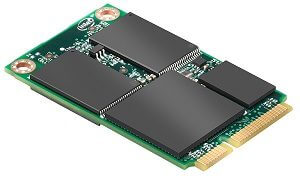 When pushed to the absolute limit, PCI has been known for data transfer rates of over 12Gbps because of being a part of the motherboard. For consumers, that means the box’s description of 3~6Gbps is theoretically correct, whereas the actual speeds average around 500Mbps for read as well as write operations.
When pushed to the absolute limit, PCI has been known for data transfer rates of over 12Gbps because of being a part of the motherboard. For consumers, that means the box’s description of 3~6Gbps is theoretically correct, whereas the actual speeds average around 500Mbps for read as well as write operations.
For the purpose of backward compatibility, an upgraded version of SATA namely SATA III is also available in the market. With backward compatibility enabled for all SATA interfaces, the speeds achieved theoretically as well as practically mirror the PCIe version.
With these two out of the way, we say hello to the “.2” duo. The most recent developments conceived the M.2 and U.2 versions of SSDs. These technologies were developed for the mobile computing market and hence the development focuses on smart-phone scale form factors, with 256GB memory cards already nearing completion. Both these abstractions fall under the Next Generation Form Factor (NGFF) designing standards.
The M.2 technology uses a combination of hardware for the combined performance of USB3.0 (compatible with USB 2.0), SATA III and PCIe. This allows it mimic the functional superiority of all these devices as and when required. The interface is of PCI design but redeveloped for the technology. U.2, previously named SFF-8639, is pretty much the same as M.2 except that it’s developed was intended for flexibility in form factor design lacking in the M.2 version because of M.2’s fixed interface design. This way the U.2 technology allows several possible design possibilities while M.2 focuses strictly on performance, both for mobile devices.
Performance
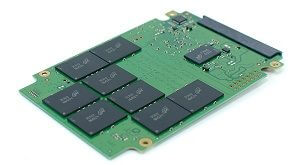 As stated before, the SATA III version and PCIe version differ in interfaces but not so much in technology. In comparison, the M.2 and U.2 standards have the same difference. The fixed designs for the SATA or PCIe (M.2 & U.2 included because the interface falls under the same design family) allow for a structured and pre-packaged approach towards data transfer meaning established and tested technologies have been combined on the basis of previous experiences and successful implementations.
As stated before, the SATA III version and PCIe version differ in interfaces but not so much in technology. In comparison, the M.2 and U.2 standards have the same difference. The fixed designs for the SATA or PCIe (M.2 & U.2 included because the interface falls under the same design family) allow for a structured and pre-packaged approach towards data transfer meaning established and tested technologies have been combined on the basis of previous experiences and successful implementations.
Coupled with this, the dishing out of moving parts means interface speeds will not be slowed down by the prevailing mechanical technology behind them. This means that whereas SATA (regular, I, II & III) offered 300MBps for HDD technology, its SSD counterpart stars off at a minimum of 600MBps offering even more as we go up the ladder.
The latest SATA III SSD technology offers average speeds of 6.0 GBps. With this, the PCIe technology allows speeds stating from 1.0 GBps going to 15.75GBps in testing environments for PCIe 3.0.
With M.2 and U.2 versions address sizing and design possibilities, the speeds of the technologies are not different than the aforementioned versions. The speeds are pretty much the same, with a variety of desktop and laptop systems not yet able to support the new chip-based memory devices. Because of this, most of the M.2 or U.2 SSDs come prepackaged or pre-installed in the hardware you purchase, with commercially available products already hitting the shelves.
Capacity and Pricing
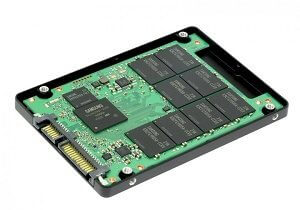 We’re going to keep this section short and we’re also going to add two things into one. This is because as you may have guessed, manufacturers are trying to fit more space into less space (virtual in physical respectively). With smart phones and mobile tablets already having hundreds of GBs of memory already inside coupled with the earliest SSD technology having evolved from 128 GB to 1 TB drives, the sky is literally the limit here.
We’re going to keep this section short and we’re also going to add two things into one. This is because as you may have guessed, manufacturers are trying to fit more space into less space (virtual in physical respectively). With smart phones and mobile tablets already having hundreds of GBs of memory already inside coupled with the earliest SSD technology having evolved from 128 GB to 1 TB drives, the sky is literally the limit here.
The products already launched to the market place are available in the default 128GB/256GB/512GB/1TB/2TB capacities with more on the way. As far as the pricing is concerned, 1.2TB PCIe drives from Intel average at 650USD while an M.2 from Intel (512GB) comes down to 140USD. Notice the difference between prices simply because the “.2” technologies were created with mobile devices and small form factors in mind.
What SSD to buy?
Samsung 970 Evo
Details: 250GB/500GB/1TB/2TB | Interface: PCIe Gen 3 x4 M.2 | Warranty: 5-years
Samsung’s SSDs continue to improve every year. The 970 Evo already builds on awesome preformance of its predecessor, the 960 Evo. It’s available with up to 2TB of storage, so no worries about space anymore.
Toshiba OCZ RD400
Details: 128GB/256GB/512GB/1TB | Interface: PCIe Gen 3 x4 M.2 | Warranty: 3-years
This SSD provides lots of size options. Actually 4 sizes with 3 different form factors: M.2, M.2 2280 and add-in card (AIC).
HP S700 Pro
Details: 128GB/256GB/512GB/1TB | Interface: SATA 3 | Warranty: 3-years
This robust SSD will probably last for years. It’s super tough. HP claims it can last up to 2 million hours of use and up to 650 terabytes written. However – it might be a bit slow for gamers.
Conclusion
The new SSD technology like all others is a step towards diversity of design and engineering possibilities. With this succession of technologies, the SSD industry is sure to be set for many new products to come. As always, no one version is a fit-all, what you need really depends on your requirements and most of all, what you already have (in the case you want to extend your memory for your existing rig).
Either way, here’s a rule of thumb. For existing motherboards and other technologies, SATA III and PCIe are the best options. For the latest versions of such hardware, suitable M.2 and U.2 chips (drives) may just be available at the same place. All in all, this array of new technologies is about to hit the mobile market niche with a punch.

